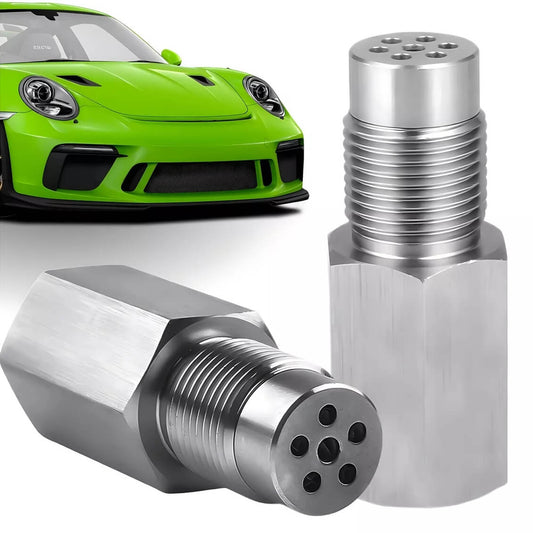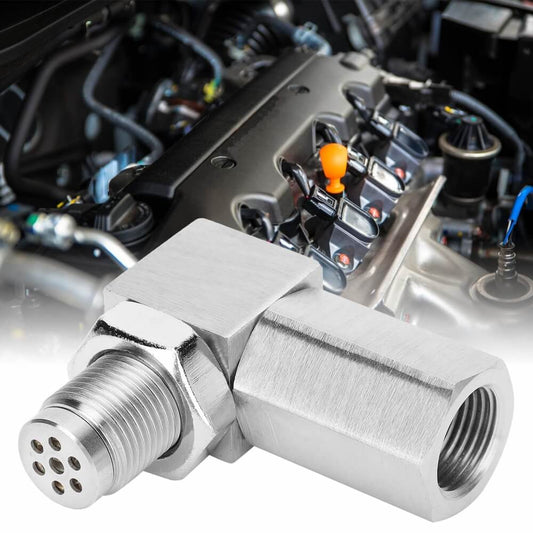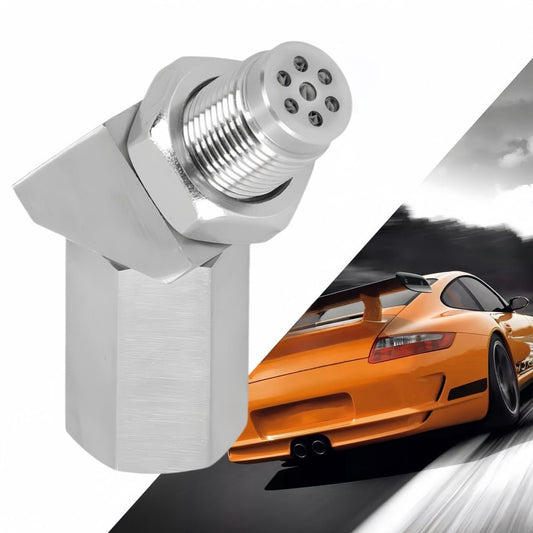Are Mini Catalizadors a Quick Fix for Bad Catalytic Converters?
Share
The ECU of a modern vehicle is a marvel of engineering: it controls transmission shifts, engine timing, and monitors various systems for consistency. Depending on your perspective, Mini Catalizadors (the latest generation of O2 sensor spacers) can either hinder or enhance this functionality.

If you’re an environmental advocate concerned about vehicle emissions, you might view these devices with skepticism, as their primary purpose is to bypass emission control systems. However, if you’re more focused on keeping your dashboard free of Check Engine Lights (CELs), the Mini Catalizador will likely pique your interest.
Article Outline
1. What Are Mini Catalizadors?
2. How Does an O2 Sensor Work?
3. How the ECU Decides (When to Set a CEL)
4. Are Mini Catalizadors a Quick Fix for Bad Catalytic Converters?
5. Chemical vs. Physical Damage: How a Catalytic Converter Goes Bad
6. Wrapping Up: Should You Use Mini Catalizadors?
What Are Mini Catalizadors?
Mini Catalizadors are advanced O2 sensor spacers made from high-quality stainless steel. Unlike traditional spacers, they integrate a mini catalytic converter with a 400-cell ceramic honeycomb structure coated with platinum, palladium, and rhodium. These materials catalyze the conversion of harmful exhaust gases into less harmful substances like carbon dioxide (CO2) and water (H2O).
The Mini Catalizador threads into the exhaust bung, creating a space between the exhaust pipe and the oxygen sensor. This design not only tricks the ECU into thinking the catalytic converter is functioning properly but also reduces emissions, making it a more environmentally friendly solution compared to standard O2 sensor spacers.
How Does an O2 Sensor Work?
When an engine runs, it burns a mixture of air and fuel, producing harmful gases. These gases pass through the catalytic converter, where a chemical reaction converts them into less harmful substances.
Most vehicles have two oxygen sensors:
- Pre-catalytic O2 sensor: Measures oxygen content in exhaust gases before they enter the catalytic converter.
- Post-catalytic O2 sensor: Measures oxygen content after the gases pass through the catalytic converter.
The Mini Catalizador works by altering the position of the post-cat O2 sensor, reducing its exposure to exhaust flow. The built-in mini catalytic converter further processes the gases, ensuring the ECU receives the expected readings.
How the ECU Decides (When to Set a CEL)
The ECU compares oxygen readings from the pre- and post-cat sensors. If the post-cat sensor detects similar oxygen levels as the pre-cat sensor, the ECU assumes the catalytic converter is malfunctioning and triggers a CEL (e.g., P0420 or P0430).
By increasing the distance between the O2 sensor and the exhaust flow, the Mini Catalizador ensures the post-cat sensor reads lower oxygen levels. This tricks the ECU into believing the catalytic converter is working correctly, preventing the CEL from illuminating.
Are Mini Catalizadors a Quick Fix for Bad Catalytic Converters?
If you’ve dealt with persistent P0420 or P0430 codes, you know how frustrating they can be. Clearing the codes often provides only temporary relief, as they tend to reappear after a short drive.
The Mini Catalizador offers a solution by simulating the function of a catalytic converter. However, its effectiveness depends on the type of damage your catalytic converter has sustained.
Chemical vs. Physical Damage: How a Catalytic Converter Goes Bad
Catalytic converters can fail in two ways:
1. Chemical Damage: The converter loses its ability to process exhaust gases but remains physically intact. This is often caused by contamination or overheating.
2. Physical Damage: The internal honeycomb structure collapses, obstructing exhaust flow. This is usually due to impact or wear and tear.
The Mini Catalizador is best suited for vehicles with chemically damaged catalytic converters. For physically damaged converters, replacing the unit is the only viable solution.
Wrapping Up: Should You Use Mini Catalizadors?
The decision to use a Mini Catalizador depends on your specific situation. If your catalytic converter is chemically damaged and you’re looking for a temporary fix, the Mini Catalizador can effectively eliminate CELs and improve engine performance.
However, it’s important to note that global warming is a pressing issue, and reducing vehicle emissions is crucial. Always check local regulations before installing a Mini Catalizador, as using it to manipulate emission tests may be illegal in some jurisdictions.
Ultimately, while the Mini Catalizador is a powerful tool for resolving CEL issues, it’s not a permanent replacement for a properly functioning catalytic converter. For long-term reliability and environmental responsibility, consider replacing a damaged catalytic converter when possible.





